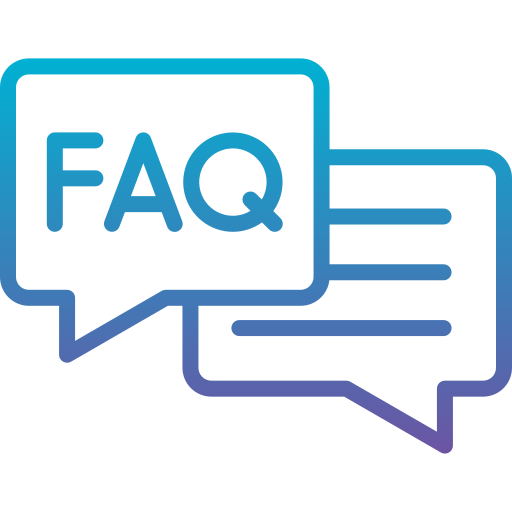
How does a screencast demo benefit my business?
Screencast demos effectively communicate product value, increasing user engagement and driving conversions.
What makes a screencast demo successful?
Successful screencast demos are concise, engaging, and benefit-oriented, clearly demonstrating key features with a compelling call to action.
How do I plan a screencast to showcase my product effectively?
Effective planning involves defining the target audience, outlining key features, scripting a clear narrative, and storyboarding visuals.
What are common screencast demo mistakes?
Common mistakes include excessive length, unfocused content, poor audio/video quality, and a weak call to action.
What's the ideal screencast demo length?
Ideal length is typically 60 seconds to 3 minutes, depending on complexity and audience.
How can storytelling enhance my screencast demo?
Storytelling creates an emotional connection, making the product relatable and memorable. Example: Showcasing a project management tool by following a character's journey from overwhelmed to organized.
What narrative structure best highlights software features in a screencast?
A problem-solution narrative effectively highlights features by showcasing how the product solves user pain points. Example: Demonstrating how accounting software simplifies tax preparation.
How can visual cues guide viewer attention in a screencast?
Visual cues like highlights, zoom-ins, and annotations direct viewer attention to key functionalities. Example: Highlighting a "drag-and-drop" feature in a design software demo.
How do I make my screencast accessible?
Accessibility is crucial. Provide captions, transcripts, and keyboard navigation for inclusivity. Example: Adding captions for viewers with hearing impairments.
How do I storyboard a screencast demo effectively?
Storyboarding involves sketching key scenes, outlining narration, and planning visual transitions. Example: Creating a storyboard for a mobile app demo, showing each screen and user interaction.
How do I tailor a screencast demo for different user levels?
Tailor demos for different user levels by creating separate versions or incorporating branching paths. Example: Creating a basic and advanced demo for a video editing software.
How can I demonstrate complex software functions concisely in a screencast?
Demonstrate complex functions concisely by breaking them down into smaller steps with clear visuals. Example: Showing a multi-step process in a data analysis software using screen recordings and annotations.
How can visuals enhance understanding in a screencast?
Visuals enhance understanding by illustrating complex concepts and providing step-by-step instructions. Example: Using diagrams and charts to explain data trends in a financial software demo.
How can I create a compelling call to action in a screencast?
A compelling call to action clearly states next steps, provides contact information, and offers incentives. Example: Offering a free trial or consultation at the end of a SaaS demo.
How can I learn from successful screencast demos?
Analyze successful screencast demos to learn effective strategies for structure, narrative, and visuals. Example: Studying demos of similar products to identify best practices. Typical pricing for a 60-second screencast ranges from $1000-$6000, depending on complexity. Turnaround time is typically 3-8 weeks.
Go Beyond Basic: The Power of Interactive Demos
Moving beyond conventional Screencast Demo Video formats, we unlock a new level of user engagement: the interactive demo. These aren't just recordings; they're living experiences where potential customers actively engage with your software. This self-guided exploration provides a hands-on feel, helping prospects genuinely grasp the product's power and how it solves their unique problems.
The magic lies in transforming passive viewers into active participants. Instead of simply watching a linear presentation, users interact directly. Elements like clickable hotspots, dynamic text overlays, and crucial branching logic allow them to steer their journey, exploring features and workflows most relevant to their specific needs or role.
This user-driven approach creates personalized experiences that resonate deeply, even at scale. By allowing viewers to choose their adventure through your application, you cater directly to their individual interests, bypassing irrelevant sections and focusing solely on the value proposition that matters most to them.
Deepens Understanding Shortens Cycles Empowering prospects to interact firsthand builds a stronger connection and clearer understanding, often accelerating their path towards adoption or purchase decisions.
Unlocks Richer Insights Unlike passive videos, interactive demos provide invaluable data on *how* users navigate. We track choices made within branching paths, revealing feature interest and engagement patterns to refine future content and strategy.
Boosts Conversion Rates By providing a tailored, hands-on experience that directly addresses user needs, businesses often see significant increases in trial sign-ups, user activations, and overall conversion rates compared to static methods.
Complements Existing Content While powerful, interactive demos aren't meant to replace traditional video entirely. Static formats remain valuable for high-level overviews or situations requiring guaranteed stability without live environment interaction risks.
The interactive demo represents a powerful evolution, transforming how we showcase software. By prioritizing user engagement, personalization, and insightful data capture, we craft compelling experiences that build credibility, drive action, and move prospects closer to success.
Why Advids for Screencast Demo Video?
At Advids, we create compelling Screencast Demo Videos that clearly showcase your product or service. Our blend of technical expertise, creative storytelling, and proven success helps businesses like yours achieve measurable results.
Why Choose Advids for Your Screencast Demo Video?
Expertise and Experience: With 12+ years in the industry and over 3400 clients served, we understand what makes a Screencast Demo Video effective. Our portfolio includes successful projects for industry leaders like Razorpay, Ola, Mercedes, the United Nations, Continental, and Mercer.
Proven Track Record: We've delivered over 300 successful Screencast Demo Videos (a subset of our 3400 total projects), demonstrating our specialized expertise in this format. Our commitment to excellence is reflected in over 109 five-star Google reviews.
Client-Focused Approach: We prioritize collaboration and communication throughout the entire process, ensuring your vision is at the forefront of every decision. From initial concept to final delivery, we work closely with you to create a Screencast Demo Video that perfectly aligns with your brand and target audience.
What We Offer:
Customized Screencast Demo Video Solutions: We tailor each project to your specific needs, whether you're showcasing software features , explaining complex processes , or providing interactive tutorials.
Compelling Storytelling: Our team of skilled storytellers and animators craft engaging narratives that capture attention and drive viewer understanding.
Cutting-Edge Technology: We utilize the latest screen recording and editing software to produce high-quality, professional Screencast Demo Videos that make a lasting impact.
Partner with Advids:
Collaborative Partnership: We believe in a transparent and collaborative approach, ensuring you're actively involved in every stage of the project.
Strategic Communication: We prioritize clear and consistent communication to ensure your vision is accurately translated into a compelling Screencast Demo Video.
Ready to unlock the potential of Screencast Demo Video for your business with the latest video design trends of 2024? Let Advids be your trusted partner in transforming your ideas into engaging and effective animated experiences.
Checkout some of the projects and work our team at Advids has been producing:
What is a Screencast Demo Video?
A screencast demo video is a digital recording of a computer screen, often accompanied by audio narration, that visually demonstrates software features, explains complex processes, or provides step-by-step instructions . It's like a virtual tour of your computer screen, allowing viewers to see exactly how something works.
Screencast demo videos are used for a variety of purposes, including product demonstrations, software tutorials , training materials, and customer support guides . They are particularly effective for showcasing the functionality of software applications , explaining complex technical concepts , and providing step-by-step instructions for completing tasks .
What do top Screencast Demo Videos have in common?
Mastering screencast demos requires a strategic approach to showcase software effectively and engage viewers .
Ideal Customer Profile - Tailor the demo to resonate with specific user needs. Best practice: Create detailed user personas.
- Storyboarding - Plan a clear beginning, middle, and end for maximum impact. Best practice: Use a visual storyboard to plan shots.
- Problem & Solution - Highlight the transformation; show the problem, then the solution. Best practice: Use a before-and-after comparison .
- User Journey - Guide viewers through a typical workflow, emphasizing ease of use. Best practice: Focus on user actions and results.
- Key Features - Showcase only the most valuable features, avoiding information overload. Best practice: Prioritize features based on user feedback.
- Demo Video - Maintain a fast pace, focusing on key actions and results. Best practice: Use clear visuals and concise explanations.
- Call to Action - Use strong verbs and create a sense of urgency. Best practice: Place the CTA prominently at the end.
- Real-World Application - Use realistic scenarios to show the software's practical value. Best practice: Showcase diverse use cases.
- Metrics & Results - Use charts and graphs to visually represent data. Best practice: Focus on key performance indicators (KPIs).
- Client Testimonials - Use short, impactful quotes that highlight key benefits. Best practice: Feature diverse and credible testimonials .
What makes Screencast Demo Videos effective?
A thoughtfully designed Screencast Demo Video is a powerful tool for communicating information and engaging viewers.
The effectiveness of Screencast Demo Videos is driven by their ability to present information in a visually compelling and easily digestible format . They combine screen recordings with clear narration , animations, and other visual elements to create a dynamic and engaging learning experience.
Methods for creating effective Screencast Demo Videos include using clear and concise language, incorporating visual aids , and adding a call to action. These techniques lead to a more engaging and impactful experience for viewers, resulting in increased understanding, retention, and ultimately, desired outcomes.
How long should your Screencast Demo Video be?
Master screencast demo video length by aligning video type , use case , and funnel stage for optimal impact.
Pre-production Considerations for Determining Video Length:
Screencast demo video length guide
| Screencast Demo Types | Video Length | Use Case | Funnel |
|---|
| Product Demo | 45-60 seconds | Showcases key features and benefits using smooth transitions and engaging visuals, highlighting the product's value proposition quickly and efficiently A fast-paced style works well here | Awareness |
| Tutorial Screencast | 1-2 minutes | Guides users through a specific task or process using clear, concise instructions and on-screen annotations A clean, minimalist style enhances clarity | Consideration |
| Software Demo | 1-2 minutes | Demonstrates software functionality, focusing on user experience and workflow efficiency Use a combination of screen recording and talking head segments for a personal touch | Consideration |
| App Demo | 30-45 seconds | Highlights app features and benefits, emphasizing ease of use and intuitive design A kinetic typography style can add visual interest | Awareness |
| Explainer Video | 45-75 seconds | Explains a complex concept or process in a simple, engaging way using animation or live-action A whiteboard animation style can be effective for conveying information clearly | Awareness |
How to create Screencast Demo Videos?
Mastering user interface demo videos requires a strategic approach that prioritizes clear communication and impactful visuals . Crafting compelling screencasts demands meticulous planning and execution to showcase your product's value effectively.
* Define Objectives - Focus on measurable goals, like increased user engagement or improved conversion rates.- Target Audience - Use user personas to guide design choices, ensuring the demo speaks directly to their needs.
- Script Outline - Employ a storytelling approach, building anticipation and showcasing the product's value proposition.
- Software Selection - Prioritize software with advanced features like animation and interactive elements.
- Screen Preparation - Maintain brand consistency and use high-quality visuals to create a professional impression.
- Screen Recording - Use professional microphones and lighting to enhance audio and visual clarity.
- Visual Enhancements - Employ motion graphics and animations to highlight key features and simplify complex processes.
- Transition Effects - Use smooth transitions to guide the viewer's eye and maintain a consistent pace.
- Platform Optimization - Consider different screen sizes and resolutions to ensure optimal viewing across devices.
- Video Promotion - Utilize SEO best practices and social media marketing to increase video discoverability.
Incorporating User Testimonials in Screencast Demos
Let's talk about the magic of user testimonials in screencast demos. They're not just nice-to-haves; they're powerful tools for building trust and driving conversions . Think of them as little nuggets of social proof sprinkled throughout your demo, reassuring viewers that your product delivers on its promises. When seeking inspiration, explore screencast demo video examples best practices to see how others effectively integrate testimonials.
Imagine showcasing a project management software. Instead of simply listing features, you could include a testimonial from a satisfied customer praising the software's intuitive interface. Or, in a technology demo video, a user testimonial could highlight how the product solved a specific technical challenge. Remember, brevity is key. "Screencast demo video examples short" highlights the effectiveness of concise testimonials.
- Choose testimonials that directly address your target audience's pain points. A testimonial from a marketing manager raving about time-saving features resonates more with other marketers than a generic statement about "great software."
- Weave testimonials seamlessly into your demo's narrative. For instance, after demonstrating a key feature, showcase a testimonial that reinforces its value.
- Don't be afraid to experiment with different formats. Short video clips, text overlays, or even interactive elements within "Interactive Product Demos" can add dynamism to your testimonials.
- Especially for "Technology Demo Videos," where trust is paramount, user testimonials can bridge the gap between complex features and user understanding.
By strategically incorporating user testimonials, we transform our screencast demos from mere product showcases into compelling stories of customer success. This builds credibility, fosters trust, and ultimately, motivates viewers to take action.
The Importance of Visual Storytelling in Screencasts
We've covered the technical essentials. Now, let's explore the art of visual storytelling in screencasts. It's about transforming a simple product demo into a captivating narrative that resonates with viewers. Think of it as painting a picture with moving images and sound, drawing your audience into your product's world. This is how we move beyond simply showcasing features to truly connecting with viewers and inspiring action.
Remember, screencast Demo Video examples high quality visuals are key. We want to create an experience, not just a presentation.
- Show, Don't Just Tell: Instead of listing features, demonstrate their value through compelling visuals. Imagine showcasing project management software. Instead of simply stating it "streamlines workflows," show a before-and-after comparison highlighting the time saved.
- Evoke Emotion: Connect with viewers on a deeper level by showcasing how your product solves their problems and improves their lives. A testimonial from a satisfied customer praising the software's intuitive interface can add a powerful emotional touch.
- Simplify Complex Ideas: Use visuals to break down intricate concepts into easily digestible pieces. For instance, in screencast demo video examples software, highlighting key features through dynamic visuals can significantly enhance user understanding.
- Drive Action: Guide viewers towards the desired outcome, whether it's signing up for a trial or exploring more online software demonstrations. A clear call to action is essential.
By mastering visual storytelling, we transform our screencasts from mere product showcases into compelling narratives of customer success. This builds credibility, fosters trust, and ultimately, motivates viewers to take action. Effective software demo videos leverage this power to showcase functionality and benefits in a compelling way.
Measuring the ROI of Screencast Demo Videos
Ever wonder if your awesome screencast demos are actually moving the needle? Measuring ROI is key to understanding their true impact. Let's explore how to gauge effectiveness and ensure our videos are working as hard as we are.
Analyzing ROI isn't just about vanity metrics. It's about understanding what resonates with our audience and drives business results. By tracking the right data, we can refine our approach and create even more compelling demos.
- Engagement and Reach: Monitor views, watch time, likes, and shares to understand audience interest. For SaaS products, screencast demo video examples can showcase key features and integrations, driving trial sign-ups.
- Website Traffic and Conversions: Track website traffic from your demo and analyze lead generation and sales conversions. App demo videos should highlight user experience and functionality, leading to increased downloads.
- A/B Testing and Feedback: Experiment with different versions of your demo and gather user feedback through surveys and comments. Explainer videos, like these screencast demo video examples, can simplify complex concepts and boost user understanding.
- Brand Impact and Comparison: Evaluate the impact on brand awareness and compare the ROI of screencast demos with other marketing efforts. Feature highlight videos, a type of screencast demo, can effectively showcase specific product capabilities and drive adoption.
By focusing on these key areas, we can gain a comprehensive understanding of our demo's performance and optimize our strategy for maximum impact. Let's turn those views into valuable business outcomes.
The Screencast Demo Video Production Process
Creating compelling screencast demos involves a structured yet creative process. We'll guide you through the essential steps, transforming your product knowledge into engaging video content. Think of it as crafting a story, where your product takes center stage.
From initial brainstorming to final distribution, each stage plays a vital role in creating a demo that resonates with your audience. Let's explore the key elements of this journey, empowering you to create screencast demos that truly shine.
- Conceptualization: Define your demo's purpose. Are we showcasing a new feature or providing a comprehensive product overview? Knowing your "why" guides every subsequent decision. For example, product demo videos focus on highlighting key features and benefits, while application walkthrough videos delve into specific user workflows.
- Scripting and Visuals: Craft a concise, engaging narrative. A well-structured script keeps your demo focused and impactful. Simultaneously, plan your visuals. Think storyboarding, screen layouts, and branding elements. Looking at screencast demo video examples professional can spark inspiration.
- Production and Post-Production: This is where the magic happens. Record high-quality audio and video, minimizing distractions. Then, dive into editing. Refine your footage, add smooth transitions, and incorporate visual enhancements like annotations and callouts. Subtle background music can elevate the viewing experience.
- Optimization and Distribution: Prepare your demo for various platforms, ensuring optimal viewing across different devices. Then, promote it! Leverage social media, email marketing, and SEO best practices to maximize reach. Analyzing screencast demo video examples marketing can provide valuable insights into effective distribution strategies.
By following these steps, we transform raw footage into polished, impactful demos. Remember, iteration is key. Analyze performance metrics, gather user feedback, and continuously refine your approach. This ongoing process ensures your screencast demos remain engaging, informative, and effective.
Choosing the Right Screencast Demo Style
So, we've covered the essentials. Now, let's talk style. Choosing the right screencast demo style is like picking the perfect outfit – it needs to fit the occasion and make you shine. Whether you're showcasing a sleek software platform or a personalized service, your demo style sets the tone and captures your audience's attention.
Think of it this way: a quick, snappy app demo might be perfect for a social media campaign, while a detailed software tutorial works wonders on your website. When creating Service Demo Videos, explore screencast demo video examples for services to see how others effectively showcase client-focused solutions. Budget plays a role too. Animation adds flair but can be pricey. Sometimes, a simple screen recording with clear narration is all you need.
- Match your demo's style to your product's complexity. A simple product shines in a concise demo, while a complex one benefits from a more in-depth explanation.
- Know your audience. Are they tech-savvy or beginners? Tailor your style to their understanding. For a touch of creativity, consider animation. High-quality screencast demo video examples animation can inspire your own visual style.
- Align your style with your marketing goals. Driving quick sales? A short, impactful demo is your go-to. Building brand awareness? A longer, more engaging piece might be better. platform demo videos showcase software integrations and functionalities, demonstrating seamless workflows.
- Let your brand's personality shine through. A playful brand might use humor and bright colors, while a professional brand opts for a clean, minimalist approach.
By considering these factors, we can create screencast demos that not only inform but also captivate, driving engagement and achieving our marketing goals.
Author & Editor Bio
A video producer with a passion for creating compelling video narratives, Jai Ghosh brings a wealth of experience to his role. His background in Digital Journalism and over 11 years of freelance media consulting inform his approach to video production. For the past 7 years, he has been a vital part of the Advids team, honing his expertise in video content planning, creation, and strategy.
His collaborative approach ensures that he works closely with clients, from startups to enterprises, to understand their communication goals and deliver impactful video solutions. He thrives on transforming ideas into engaging videos, whether it's a product demo, an educational explainer, or a brand story.
An avid reader of modern marketing literature, he keeps his knowledge current. Among his favorite reads from 2024 are "Balls Out Marketing" by Peter Roesler, "Give to Grow" by Mo Bunnell and "For the Culture" by Marcus Collins. His results-driven approach ensures that video content resonates with audiences and helps businesses flourish.



